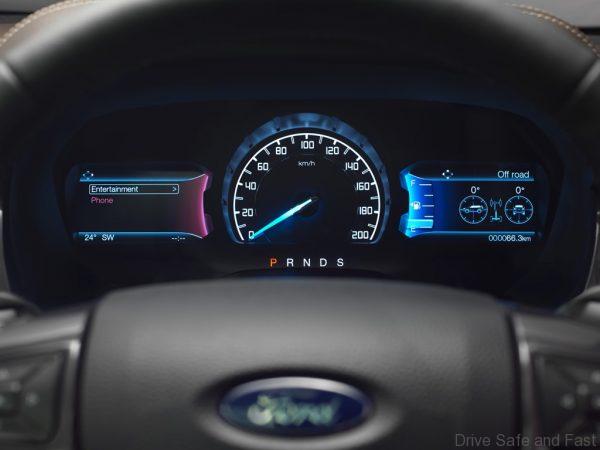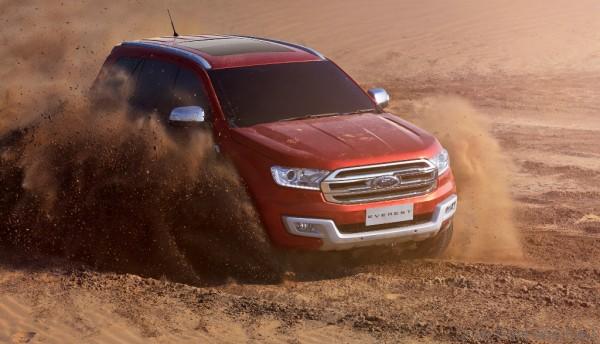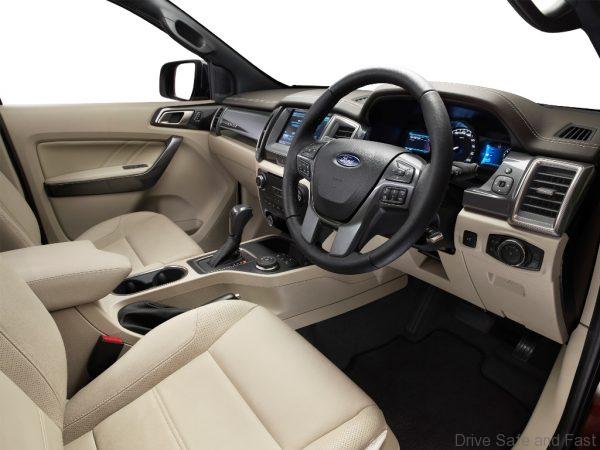We’ve all been there: You’re driving along, confident and comfortable, and then something jars your reflexes into action. Usually it’s nothing that a lane change or a speed check can’t cover, but you might find your heart beating a bit faster than usual, and your hands gripping the wheel with additional gusto.
However, no matter how vigilant you are, accidents can and do happen. That’s why the Ford Everest was engineered to help keep drivers confident and comfortable on the road, with safety features designed to react faster than you ever could. In the event of a significant side collision, the following functions can be performed within 70 milliseconds – quicker than the approximately 100 milliseconds it takes you to blink.

Sensing the Danger
As fast as it happens, there are many phases to a collision. The Everest employs advanced intelligent sensors, which are designed to detect changes in air pressure inside the doors almost instantaneously in the event of a side collision. This, combined with accelerometers that are designed to measure rapid changes in speed, helps the Everest determine the severity of a crash, and decide whether the airbags should be deployed. How long does all this take? As quickly as eight milliseconds.
Springing into Action
The next phase is designed to take approximately 25 milliseconds in a significant side impact, during which the Everest’s advanced network of airbags inflate as required for the specific type of collision detected. Along with side airbags, the Everest is available with side curtain airbags designed to provide side protection for all three seating rows. Total time since impact: less than a third of the time it takes to blink.

Standing Steady
The Everest is built with high-strength materials to manage crash energy and help maximise occupant protection. The structure of the vehicle is designed to direct crash forces away from the driver and passengers, and absorb crash energy. In less than half the time it takes to blink the steel frame and the airbags are designed to have absorbed part of the impact – before the forces have even reached the occupants. At this point, the driver and passengers may still not even be aware that a collision has taken place.

The occupant zone is protected by the strong safety cell to help minimise injury, and, crucially, to help make exiting the vehicle after an accident easier. Sensors, airbags, and structure: all of these safety functions can be performed within the window of 70 milliseconds – blink, and it’s already over.
Technology to Make Driving Easier
But better still is to avoid accidents, and that’s where the range of smart driver assist and crash avoidance technologies available in the Ford Everest come into play. These include Electronic Stability Control, which automatically decreases engine torque and/or applies a braking force to individual wheels when it senses that the vehicle is turning more or less than intended, Hill Launch Assist, which maintains the Everest in place for up to three seconds when a driver’s foot is removed from the brake, Emergency Brake Assist, Emergency Brake Light, Trailer Sway Control and Roll Stability Control.

While driver assist and crash avoidance technologies do not replace the driver’s attention, judgment, and need to control the vehicle, and have limitations, they may be especially helpful in unexpected situations.
A Different Kind of Computer Crash
Highly skilled crash experts in Ford’s Asia Pacific safety team used advanced computer-aided engineering, or CAE, to develop the Everest’s body structure and restraints system. The team designed the SUV’s basic safety architecture and ran thousands of detailed CAE simulations to optimise its design for all occupants. The simulations were then confirmed through an extensive real-world crash test programme.

Keep Calm and Drive On
Driving shouldn’t be the most stressful part of your day, and the Ford Everest works hard to put your mind at ease. The design and engineering behind the Everest delivers a smart system that springs into action almost instantaneously during a collision. The new Ford Everest is designed to help keep drivers confident and comfortable on the road and to react faster than the blink of an eye.





